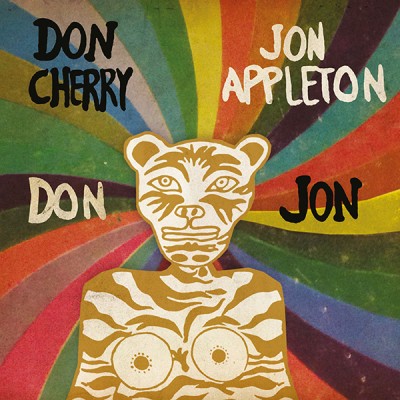Find a friend who plays synthesiser and record an album with them: this was just what you did if you were an experimental musician working in the 70s. Don & Jon, a 7" single recently pressed by Cacophonic, takes us back to the incubation stage of that historical moment. The record documents a 1969 collaboration between celebrated free jazz trumpeter Don Cherry and Jon Appleton, a composer and computer scientist who helped design the Synclavier synthesiser. Appleton would later write fantasias and melodramas for the instrument and, in 1989, publish a presciently titled manual of sorts called 21st Century Musical Instruments: Hardware And Software.
Don & Jon comprises two short improvised tracks: ‘Don’ and ‘Jon’. They are previously unreleased outtakes from the sessions that produced Human Music, an album recorded by Cherry and Appleton at Bregman Electronic Studios. These sessions marked the juncture of two distinctive musical strains: cerebral West coast avant-garde synthesiser composition, involving artists tinkering like engineers, and New York City free improvisation, with its collaborative spirit of anything goes. The results, like a lot of music from the era, sound searching and sloppy, but equally thrilling.
Synthesiser music in this time typically brings to mind either gradually evolving repetition – the aesthetic of Éliane Radigue, Laurie Spiegel, and Steve Reich – or riff-based rhythmic figures – as in the approach of Patrick Gleeson, who introduced the synthesiser to Herbie Hancock. By contrast, on Don & Jon, the combined textures of Cherry (on processed winds and percussion) and Appleton (on synthesiser) are sparse and erratic; the record feels neither like a composition nor a jam, but more like a laboratory test. In the vein of Richard Teitelbaum’s work with Steve Lacy, fidgety loops abruptly trail off, bleeps dart back and forth, obnoxious horn bursts erupt out of silence, while solar sounds echo breezily across the aural plane. Cherry and Appleton both seem as though indecisively trying on clothes, toying with processes yet untamed and imagining textures they didn’t quite know how to realise with the tools at their disposal.
In the 70s, listeners’ attitudes toward new technology, the synthesiser being a prominent example, ranged from giddy utopianism to utter phobia. Because of this, though the synthesiser was becoming commonplace, many of the most interesting musicians of the era felt their work to be highly misunderstood. In 1969, Appleton himself wrote in the journal Perspectives Of New Music: "A part of the musical public, because of the attitudes and values it holds, is incapable of responding to new music". He continued, addressing fellow composers, "We must await the development of habit responses which effectively filter this noise before we can expect a proper response to our music".
Today, many listeners are keen on opening themselves up to even the most peculiar sounds of the era of electronic music that Cherry and Appleton played a large role in shaping. In retrospect, the brief experiments on Don & Jon still sound absolutely wonky, but are highly recommended, if you’re into that kind of thing.


